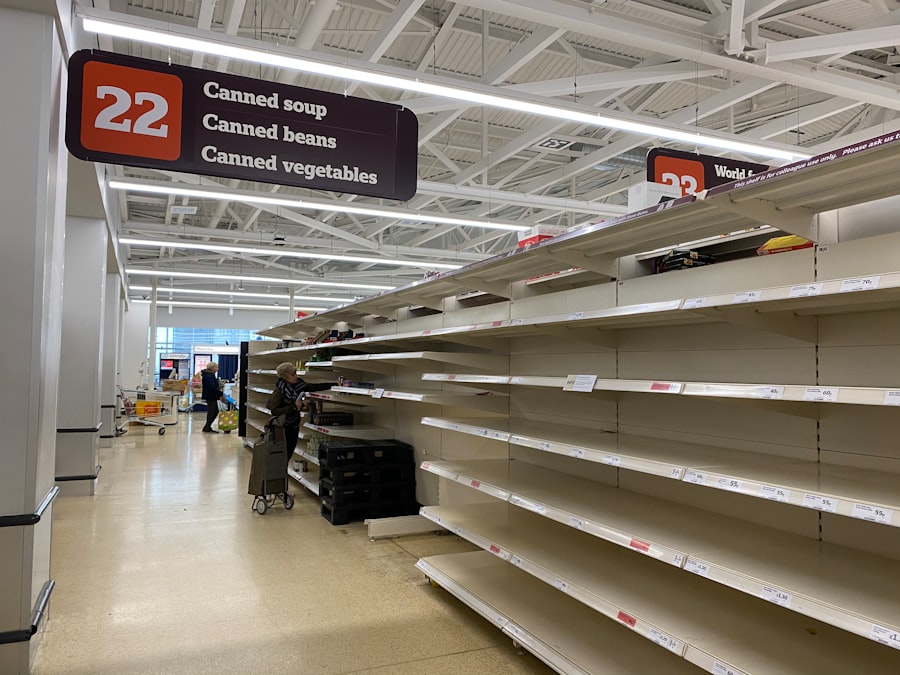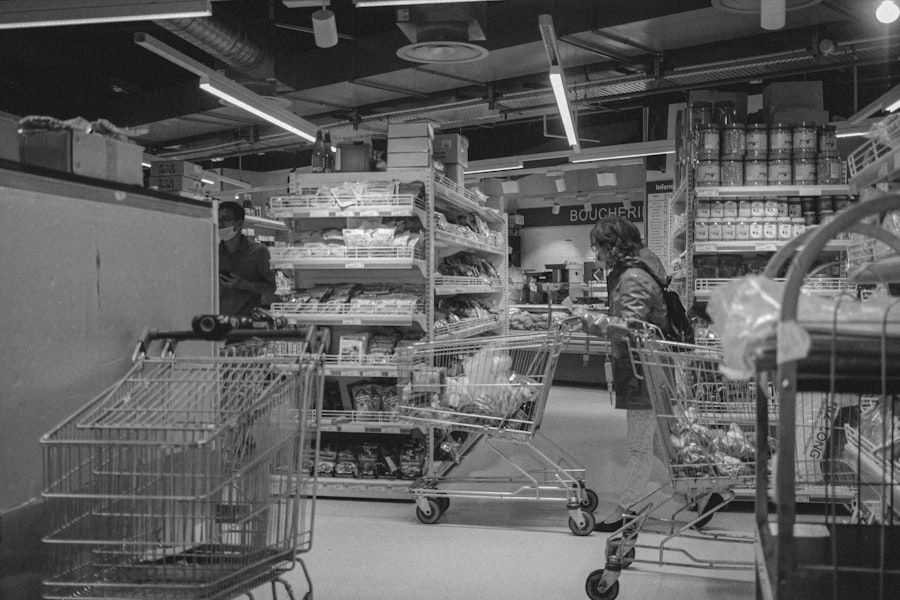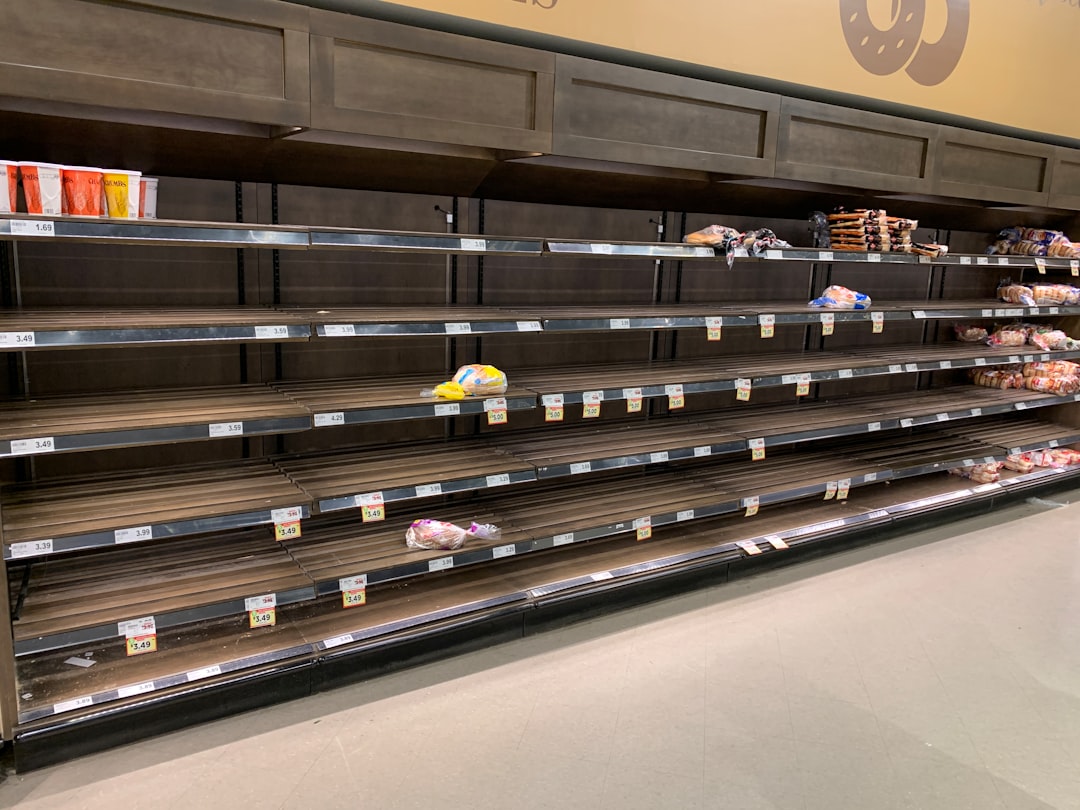The consumer goods shortages in the Soviet Union represent a significant chapter in the history of the USSR, reflecting the complexities of a centrally planned economy. During the latter half of the 20th century, the Soviet populace faced a persistent lack of essential items, ranging from basic foodstuffs to household goods.
The shortages became emblematic of the broader struggles within the Soviet economy, highlighting the disconnect between state planning and consumer needs. As the Soviet Union sought to project an image of strength and self-sufficiency, the reality on the ground often told a different story. Citizens found themselves navigating a landscape where long queues for basic necessities became a daily norm.
The shortages not only affected individual households but also had far-reaching implications for social stability and public morale. Understanding these shortages requires an exploration of the economic policies that shaped production, distribution, and ultimately, the lives of millions of Soviet citizens.
Key Takeaways
- Consumer goods shortages in the USSR were widespread and deeply affected daily life.
- Economic policies prioritized heavy industry over consumer goods production, leading to persistent scarcity.
- Black markets emerged as a response to shortages, facilitating illegal trade of scarce items.
- Public dissatisfaction and protests grew due to the lack of basic consumer products.
- The USSR’s experience offers lessons on the importance of balanced economic planning and consumer needs.
Economic Policies and Production in the USSR
The economic policies of the USSR were characterized by central planning, where the state dictated production goals and resource allocation. This system aimed to eliminate market fluctuations and ensure that all citizens had access to basic goods. However, in practice, it often led to inefficiencies and mismanagement.
The focus on heavy industry and military production overshadowed consumer goods, resulting in a neglect of sectors that directly impacted daily life. The prioritization of industrial output over consumer needs created a significant imbalance in the economy. Moreover, the bureaucratic nature of the Soviet economy stifled innovation and responsiveness to consumer demands.
Factories operated under rigid quotas, which meant that they produced what was dictated by planners rather than what was actually needed or desired by consumers. This disconnect resulted in a surplus of unwanted goods while essential items remained scarce. The lack of competition further exacerbated these issues, as state-run enterprises had little incentive to improve quality or efficiency.
Consequently, the economic policies that were intended to create a fair and equitable society instead contributed to widespread dissatisfaction and frustration among the populace.
Impact of Consumer Goods Shortages on Daily Life

The impact of consumer goods shortages on daily life in the USSR was profound and multifaceted. For many citizens, the struggle to obtain basic necessities became a defining feature of their existence. Families often had to rely on rationing or creative solutions to meet their needs, leading to a culture of resourcefulness and adaptability.
The scarcity of goods meant that individuals frequently spent hours waiting in line for items such as bread, sugar, or clothing, which not only consumed time but also fostered a sense of anxiety and uncertainty about the future. Additionally, these shortages affected social dynamics within communities. Neighbors often banded together to share information about where goods might be available or to pool resources for bulk purchases.
While this fostered a sense of camaraderie among some, it also highlighted inequalities, as those with connections or resources could navigate the system more effectively than others. The psychological toll of living in a state of constant scarcity contributed to feelings of frustration and helplessness, ultimately shaping public perception of the government and its ability to provide for its citizens.
Black Market and Illegal Trading
| Category | Estimated Annual Value (in billions) | Common Goods Traded | Regions Most Affected | Impact on Economy |
|---|---|---|---|---|
| Illegal Drug Trade | 400 | Narcotics, Prescription Drugs | Americas, Asia, Europe | Loss of tax revenue, increased crime rates |
| Counterfeit Goods | 500 | Clothing, Electronics, Pharmaceuticals | Global | Brand damage, consumer safety risks |
| Human Trafficking | 150 | Forced labor, Sexual exploitation | Asia, Africa, Europe | Human rights violations, social instability |
| Illegal Wildlife Trade | 20 | Endangered species, Animal parts | Africa, Asia | Biodiversity loss, ecosystem damage |
| Smuggling (Weapons, Goods) | 100 | Firearms, Tobacco, Alcohol | Global | Undermines law enforcement, fuels conflict |
In response to persistent shortages, a thriving black market emerged within the Soviet Union. This underground economy allowed individuals to bypass official channels and acquire goods that were otherwise unavailable through state-run stores.
However, engaging in illegal trading also carried significant risks, as authorities sought to crack down on these activities. The existence of a black market highlighted the failures of the official economy and underscored the lengths to which people would go to secure basic necessities. It also created a parallel system where prices were often inflated, making goods accessible only to those who could afford them.
This disparity further exacerbated social inequalities and bred resentment among those who felt marginalized by both the state and the informal economy. The black market became not just a means of survival but also a reflection of the broader discontent with the economic system.
Government Response to Consumer Goods Shortages
The Soviet government’s response to consumer goods shortages was often characterized by denial and attempts at damage control rather than substantive reform. Officials frequently downplayed the severity of shortages, insisting that they were temporary or localized issues rather than systemic failures. In some cases, they implemented short-term measures such as price controls or increased production quotas in an effort to alleviate public discontent.
However, these measures rarely addressed the root causes of the shortages. In an attempt to improve public perception, the government also launched campaigns promoting consumerism and encouraging citizens to take pride in their limited options. These initiatives often fell flat, as they failed to resonate with a populace that was acutely aware of the disparities between official propaganda and everyday reality.
Ultimately, the government’s inability or unwillingness to confront the underlying issues contributed to growing frustration among citizens and eroded trust in state institutions.
International Relations and Trade

International relations played a crucial role in shaping the consumer goods landscape within the USSR. The Cold War context meant that trade relationships were often influenced by ideological considerations rather than purely economic ones. While some Eastern Bloc countries provided limited support through trade agreements, Western nations largely viewed the Soviet Union with suspicion and hostility.
This geopolitical climate restricted access to foreign goods and technology that could have alleviated some of the shortages faced by Soviet consumers. Moreover, attempts at trade with Western nations were often hampered by bureaucratic inefficiencies and a lack of understanding of market dynamics. The Soviet leadership’s reluctance to embrace market-oriented reforms further isolated them from potential partners who could have provided much-needed resources or expertise.
As a result, while other countries were able to adapt their economies in response to consumer demands, the USSR remained entrenched in its rigid system, exacerbating its consumer goods shortages.
Public Dissatisfaction and Protests
As consumer goods shortages persisted, public dissatisfaction grew within Soviet society. Citizens began to express their frustrations through various means, from informal discussions among friends and family to more organized protests against local authorities. While open dissent was often met with repression, there were instances where citizens found ways to voice their grievances without attracting undue attention from state security forces.
The growing discontent was not solely about material deprivation; it also reflected deeper frustrations with the political system itself. Many citizens felt trapped in an economic model that failed to meet their basic needs while simultaneously stifling individual freedoms. This sense of entrapment fueled calls for reform and greater accountability from government officials.
As dissatisfaction simmered beneath the surface, it laid the groundwork for future movements advocating for change within Soviet society.
Role of Technology in Consumer Goods Shortages
Technology played a dual role in exacerbating and potentially alleviating consumer goods shortages in the USSR. On one hand, outdated manufacturing processes and lack of investment in modern technology hindered production efficiency and quality. Factories often relied on antiquated machinery that could not keep pace with demand or produce goods that met consumer expectations.
This technological lag contributed significantly to the persistent shortages that plagued everyday life. On the other hand, advancements in technology offered potential solutions that were largely untapped due to ideological constraints. The Soviet leadership’s reluctance to adopt market-oriented practices meant that innovative approaches to production and distribution remained unexplored.
While some sectors did experience technological advancements—particularly in heavy industry—the benefits rarely trickled down to consumer goods production. As a result, technology became both a barrier and a missed opportunity in addressing the pressing needs of Soviet consumers.
Legacy of Consumer Goods Shortages in the USSR
The legacy of consumer goods shortages in the USSR is complex and multifaceted. These shortages not only shaped individual experiences but also influenced broader societal attitudes toward government authority and economic systems. The persistent lack of basic necessities fostered a culture of skepticism toward state promises and propaganda, leading many citizens to question the efficacy of central planning as an economic model.
In retrospect, these shortages served as a catalyst for change within Soviet society. They highlighted fundamental flaws in the economic system that ultimately contributed to its collapse in 1991. The lessons learned from this period continue to resonate today, as they underscore the importance of responsiveness to consumer needs and adaptability within economic frameworks.
Comparison to Consumer Goods Shortages in Other Countries
When comparing consumer goods shortages in the USSR with those experienced in other countries, several key differences emerge. For instance, while many nations have faced temporary shortages due to crises such as natural disasters or economic downturns, these situations are often resolved through market mechanisms or international aid. In contrast, Soviet shortages were systemic and deeply entrenched within an ideological framework that resisted change.
Additionally, countries transitioning from centrally planned economies have often faced similar challenges but have been able to implement reforms more rapidly than was possible in the USSR. For example, nations like China have experienced significant economic growth by embracing market-oriented policies while still maintaining some level of state control. This adaptability has allowed them to avoid many pitfalls associated with prolonged consumer goods shortages.
Lessons Learned from USSR Consumer Goods Shortages
The consumer goods shortages experienced in the USSR offer valuable lessons for contemporary societies grappling with similar issues. Centralized planning without responsiveness to consumer needs can lead to widespread dissatisfaction and social unrest. Moreover, fostering an environment that encourages innovation and adaptability is crucial for addressing economic challenges effectively.
Ultimately, understanding these historical shortages provides insight into how economic systems can either empower or disenfranchise citizens. By learning from past mistakes, modern economies can strive for greater balance between state control and market dynamics, ensuring that they meet the needs of their populations while fostering resilience against future challenges.
In the 1980s, the Soviet Union faced significant consumer goods shortages, which were a result of various economic and political factors. For a deeper understanding of this issue, you can read more about it in the article available at this link. The shortages not only affected daily life for citizens but also contributed to the eventual decline of the Soviet economy.
WATCH THIS 🛑 The $10 Trillion Lie: How The USSR Was Bankrupt 10 Years Before It Fell
FAQs
What were the main causes of consumer goods shortages in the USSR during the 1980s?
The primary causes included centralized economic planning inefficiencies, lack of competition, poor supply chain management, and resource allocation focused on heavy industry and military rather than consumer goods. Additionally, technological stagnation and bureaucratic delays contributed to persistent shortages.
Which types of consumer goods were most affected by shortages in the USSR during the 1980s?
Commonly affected goods included clothing, footwear, household appliances, electronics, food products, and personal care items. Many everyday essentials were either scarce or of low quality.
How did consumer goods shortages impact daily life for Soviet citizens in the 1980s?
Shortages led to long queues, rationing, and reliance on the black market. Citizens often had to wait for extended periods to purchase basic items, and many resorted to bartering or informal networks to obtain goods.
Did the Soviet government take any measures to address consumer goods shortages in the 1980s?
Yes, the government attempted reforms such as increasing imports, improving production efficiency, and introducing limited market-oriented policies under leaders like Mikhail Gorbachev. However, these measures had limited success due to systemic economic problems.
How did consumer goods shortages in the USSR compare to those in other Eastern Bloc countries during the 1980s?
While shortages were common across many Eastern Bloc countries due to similar centrally planned economies, the severity and types of shortages varied. The USSR, being the largest economy, faced significant challenges but also had more resources to mitigate some shortages compared to smaller states.
What role did the black market play in the USSR’s consumer goods shortages?
The black market was a crucial alternative source for many goods unavailable through official channels. It allowed citizens to obtain scarce items but also contributed to corruption and economic inefficiencies.
Did consumer goods shortages contribute to the eventual dissolution of the USSR?
While not the sole cause, persistent shortages and economic stagnation undermined public confidence in the government and contributed to social dissatisfaction, which were factors in the broader political and economic crises leading to the USSR’s collapse.
